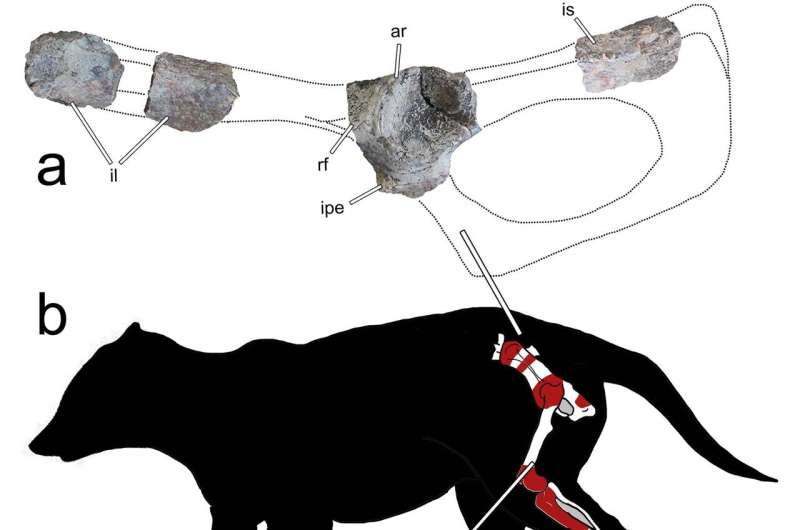February 23, 2024 report
This article has been reviewed according to Science X's editorial process and policies. Editors have highlighted the following attributes while ensuring the content's credibility:
fact-checked
peer-reviewed publication
trusted source
proofread
Larger-than-expected prehistoric mammal species uncovered in Patagonia

A multi-institutional team of archaeologists and paleontologists has unearthed and identified a new species of mammal from the Maastrichtian age. In their paper published in the journal Scientific Reports, the researchers note that the mammal was much larger than any other known examples of its kind.
The fossil consists of a femur, tibia, hip and hip socket—enough for the team to identify it as belonging to a group known as Theria, which comprises non-egg-laying mammals. It also was enough to show that the animal was large compared to other mammals of its time. The team named the new creature, Patagomaia chainko. It was excavated in southern Patagonia.
They describe it as a medium-sized mammal compared to today's standards, likely about the size of an Andean fox. They suggest the size of the species on average could have varied from 2 to 25 kilograms and that it likely grew to be about a meter long; it lived approximately 70 million years ago.
The researchers note that prior research has shown that most mammals of the time had a body mass of below 100 grams, and that only a fraction of them reached 1 kilogram. Their smallest estimates for P. chainko place it among the largest mammals of the Mesozoic Era. The research teams theorize, based on the fossils, that the shape of the animal was likely similar to that of a platypus, or perhaps a porcupine or badger.
Mammals during the Mesozoic tended to be very small, about the size of modern mice or shrews, and body size for mammals during the Mesozoic was on average larger for those living in the southern hemisphere, than in the northern, until the asteroid arrived that wiped out the dinosaurs. The researchers suggest the new find will help us better understand the evolution of mammals in the southern hemisphere during the Mesozoic Era.
More information: Nicolás R. Chimento et al, A large therian mammal from the Late Cretaceous of South America, Scientific Reports (2024). DOI: 10.1038/s41598-024-53156-3
Journal information: Scientific Reports
© 2024 Science X Network





















